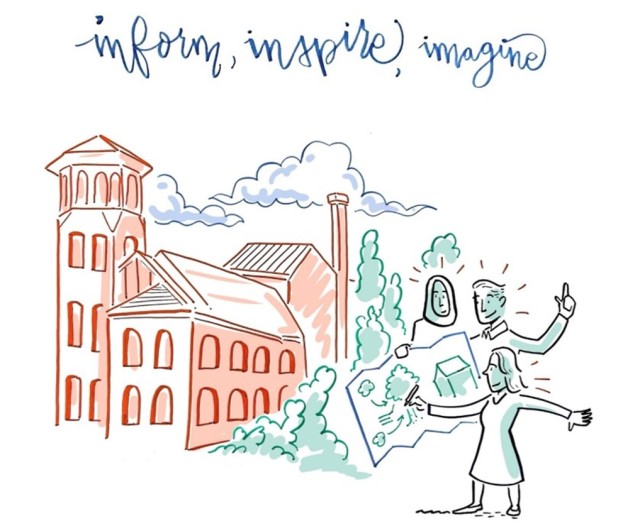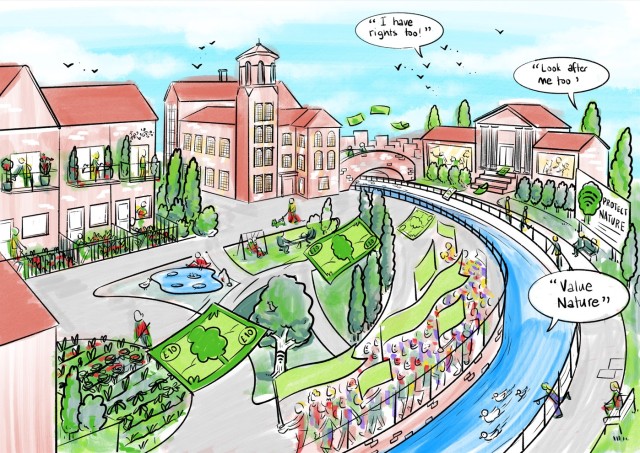Major institutions around the world are realising that a sustainable future requires a new relationship with nature. From the UN commissioned Stockholm+50 evidence review to the ‘Exiting the Anthropocene? Exploring fundamental change in our relationship with nature’ briefing from European Environment Agency, environmental science-policy thinking is pushing beyond what has gone before. This recognition and progress is driven by research, but the application of that research into policy solutions requires new thinking.
The Nature Connection in Policy and Practice event, hosted by University of Derby’s Nature Connectedness Research Group, aimed to share this research and its applications and provide a context for generating the kind of new thinking needed for transforming society’s relationship with nature. It was held at Derby’s Silk Mill – the site of the world’s first factory, a starting point of an industrial relationship with nature based on use and control, so a great place to start to forge a new relationship with nature based on care and reciprocity. The event set out to inform, inspire and imagine a vision of a nature connected society. The Silk Mill Vision report is available here.
The Inform session set out to share the latest nature connectedness evidence, its benefits for human and environmental wellbeing and, importantly, how it can be improved. Full details are available in the report. The session ended with a Policy Network Activity which mapped out broad policy areas that can contribute to a nature connected future – the network maps can also be found in the report.
The Inspire session shared examples of transforming nature connection research into policy and practice across a range of sectors before the Imagine session where attendees took part in an exercise to imagine a future with nature connection at the heart of policy. Groups presented their visions and manifestos for nature connected societies and these were distilled into key themes and a narrative summary. Once again details of the Inspire and Imagine sessions are presented in the full report.
The 5 themes were:
- Community Participation and Governance – Nature, communities and future generations are given a voice in decision-making processes to help shift norms to value actions that benefit nature.
- Sustainable Economy and Natural Credits – integration of nature into the financial system and rewarding actions that benefit nature, through a circular biodiversity and well-being economy, with a biodiversity pegged currency linking nature’s recovery to the prosperity of all.
- Infrastructure and Land Use – nature based regeneration to repurpose outdated infrastructure to engage people with a vibrant natural environment. Development and common spaces for growing food and nature to help people have a closer connection to their food, both in terms of food miles and natural ingredients.
- Nature Integration into Daily Life and Education – keeping nature present in everyday life, for example, through utilising technology for feedback on local nature. Implementing sustainability as an educational goal with a nature-based curriculum to foster caring relationships with the natural world.
- Social Values and Corporate Responsibility – collective celebrations of nature, and celebrations of culturally diverse nature connections. Corporations act as stewards of the environment, moving from punishment for harm done to restoration and repair. Nature represented on the board. Prioritise the protection, restoration, and repair of nature through legislation and legal duties.
These themes are illustrated in the vision above, 1- Trees, river and birds with a voice; 2 – the nature bank with biodiversity pegged currency floating out; 3 – homes with space for food and nature; 4 – adults and children enjoying nature with feedback from the wi-fi enabled tree on a big screen; 5 – a parade of people celebrating nature.
Summary
A vision is the first step towards transformational change, to be followed by opportunities for communities to take action, become engaged and updated on their progress. The essential conclusion from the Silk Mill day is that visions and opportunities for a new relationship with nature can be targeted and made. It is possible to move beyond treating the symptoms of the failing relationship with plans for nature and plans for people, to target and restore the human-nature relationship. The Silk Mill vision is one vision distilled from the imaginings of one group, for vision-driven policy, other groups and communities can and should be enabled to share their visions of a new relationship with nature.
It was a positive experience, and personally, it was a great day hearing how a new relationship with nature is of relevance across sectors. It also gave me the opportunity to go on about ideas for a biodiversity pegged currency, an advertising levy (half a penny in the pound for nature) and keeping nature present in everyday life through utilising technology. I also found the movement to give nature rights to be very powerful. Overall, in contrast to the stories of what we need to give up to meet net zero, this was a day of imagining a future with, rather than without – an approach to be recommended.
Live scribe and vision images by James Huyton, Burograph.



Now, a nature-connected society is the way forward. Thank you 🙏🌍